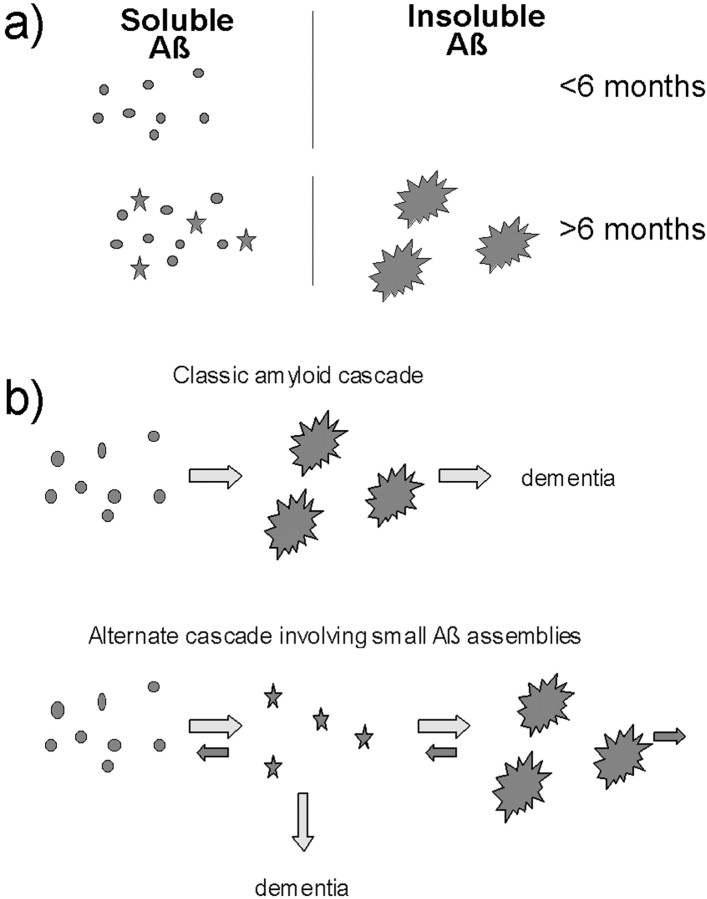Fig. 7.
Proposed model of small Aβ assemblies disrupting learning and memory. a, Tg2576 mice <6 months have soluble Aβ (circles) but no memory loss. This indicates that the soluble Aβ species present in mice <6 months do not disrupt cognitive function. Mice >6 months show memory loss coinciding with the appearance of detergent-insoluble Aβ aggregates (large starbursts), also referred to as Aβinsol. However, when memory and Aβinsolwere studied in mice across a broad age range, no correlation was found, arguing against Aβinsol being the major cause of memory loss in Tg2576 mice. Yet inverse correlations between memory and Aβinsol became apparent when mice were stratified by age. To explain these findings, we propose that amyloid load and Aβinsol are both surrogate measures for one or more small Aβ assemblies (stars) that disrupt learning and memory. An extension of this hypothesis is that these Aβ assemblies may also be involved in the conversion of soluble to insoluble Aβ. Although it is possible that these Aβ assemblies comprise a subset of the insoluble Aβ species, the difficulty of reconciling in some old mice very high levels of Aβinsol with relatively normal cognitive function mitigates against this possibility. It is more likely that the Aβ assemblies reside among the soluble Aβ species.b, The hypothetical cascade involving small Aβ assemblies contrasts with the classic amyloid cascade hypothesis, in which cognitive dysfunction and dementia are caused by the accumulation of insoluble Aβ aggregates resulting in neuronal destruction. In the alternate cascade involving Aβ assemblies, memory loss and dementia are caused by a subset of soluble Aβ species that are present in the subpopulation of mice that possess Aβinsol, the presence of which reflects the Aβ assemblies.

